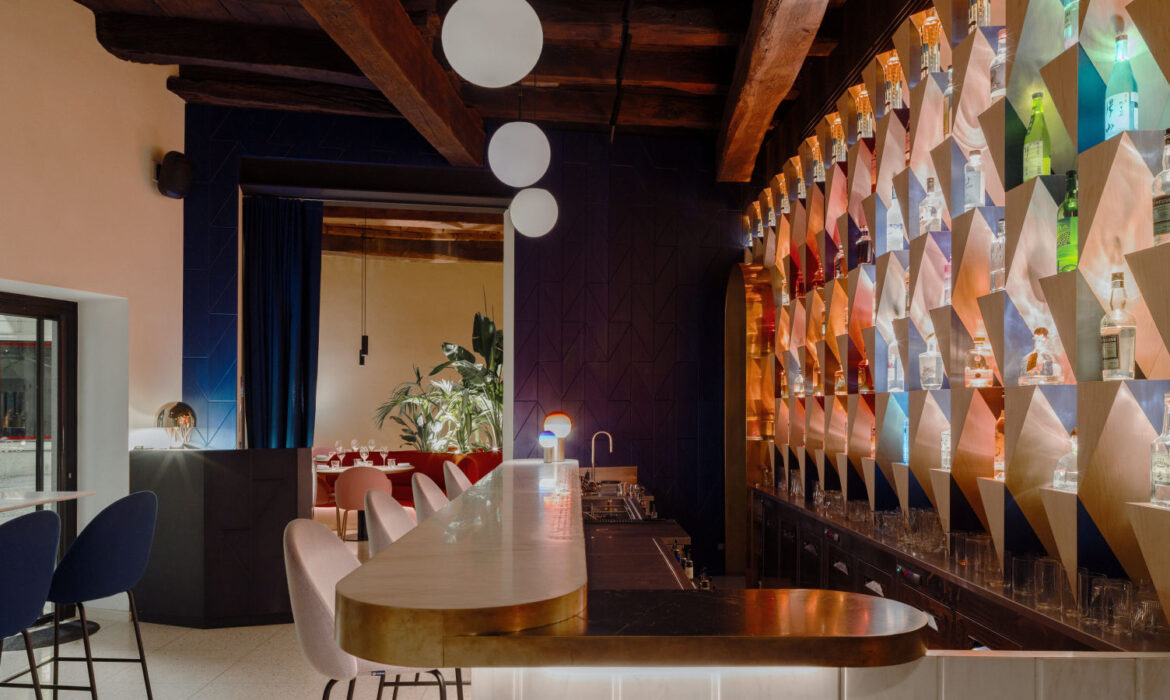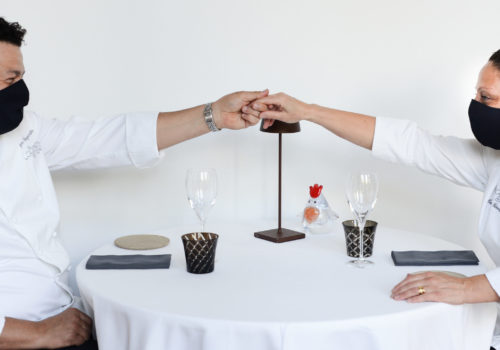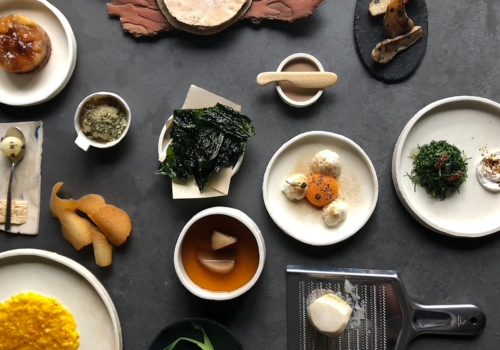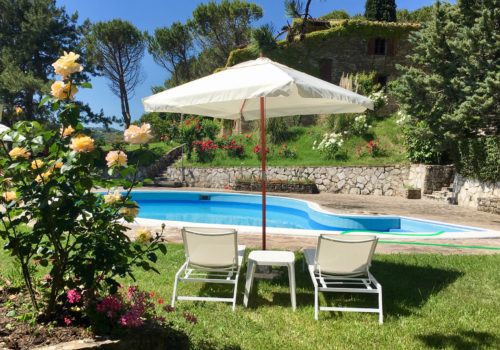In front of the Basilica di San Giovanni Battista, the restaurant stands out for its fine cuisine and design
Saint has opened in the heart of Monza, as a new gathering place in the city for anyone looking for a venue open from breakfast to after-dinner, with a captivating design and a view that leaves you breathless. This is Piazza Duomo, in the scenario of an urban drawing room dominated by the Basilica Minore di San Giovanni Battista, built between the XIV and XVII centuries. Stripes of white and green marble, a central rose window, two and three-light windows and lunettes together constitute the spectacular view you can enjoy through the generous glass surfaces of the Saint, conceived to make the relationship with the outside a constant one.
In this privileged context, Saint presents itself as a fine dining restaurant and cocktail lounge with a café, ready to welcome its customers at any time of day with a quality offer that is constantly updated. The idea, as well the property, belongs to Gabriele Viola-Boros, an entrepreneur with thirty years of experience in the hospitality and catering industry, and Stefania Aliprandi, who has experience in public relations and a great passion for interior design.
It is no surprise therefore that the interior design project was commissioned to Julia Hyoun Hee Na from the London firm Spatial
The goal is to echo the lively social atmosphere of the piazza with a joyous environment that transmits optimism, starting with the chromatic components that express nuances of orange and pink, the colours of sunset and sunrise. «The idea was to bring part of the solemnity of the Duomo into the restaurant, but with a contemporary look, and to create a sense of continuity with the piazza and a visual relationships with the cathedral itself, explains the designer. In fact, the internal distribution of the bar and tables faces the piazza itself, through the large arched openings of the façade». The protagonist of the project is the bottle display that greets you upon entering the place, an original three-dimensional system of maple wood shelves inspired by the cathedral’s candle stands. Each of the bottles rests on a dedicated shelf lit from below, so that in the evening the soft light emanated from the bottles creates an intimate, cozy atmosphere. Another important piece of Saint’s interior design is the “Flower”, the orange sofa that serves four tables: in the middle of the sofa is a space dedicated to temporary installations. «We have already been contacted by several art galleries and independent artists for this space – explains Stefania, who is very attuned to and close to the art world. This is an initiative that fascinates and involves me because it carries a timeless allure and can create opportunities to meet, synergies and moments of interest. We collaborate with designers in the same way».
While the aesthetic dimension is stimulated by the captivating and seductive design, the food has been entrusted to the young chef Michele Cioffi from the Campania region who proposes dishes made with fine Italian products and some gourmet ingredients from France. «My cuisine philosophy at Saint is based on preserving the authentic flavours of our peninsula, seeking to present them with techniques that also satisfy our customers’ eyes, explains the chef, who has many working experiences around the world. Techniques that modify traditional dishes, but when you taste them, they remind you of the flavours of days gone by». Inspired by tradition but with a touch of creativity, the menu offers land, sea and vegetarian dishes: starters such as veal with tuna sauce, grilled octopus, beetroot salad, pasta dishes such as cappelletti, ossobuco and saffron and risotto, Mazara shrimp and buffalo mozzarella, and entrées such as steamed flounder. There is also a vegan menu with flavourful dishes such as spaghettone with tomatoes, olives and capers.
«We try to use as many locally-grown 0 Km products as possible, especially the vegetables which are delivered by small companies in the region», specifies the chef. The dishes may be savoured with the cocktails conceived by Giovanni Ulivi and Nicolò Centemero together with Elisabetta Ciceri and in collaboration with the chef, conceived to complete that “sensory” tasting experience – as the Saint defines it – which is also the fil rouge of the restaurant’s concept and food and wine menus.
Saint has collaborated and collaborates with many artisans and companies in the region for both the raw materials and products, such as the conserves and juices prepared by two small companies from Carate Brianza who work respecting the laws of nature, and for the interior design, which involved expert cabinetmakers in Lissone, which not coincidentally is known as “furniture city”. At a complex time for Italian restaurants, Pantografo asked the owners of Saint about their strategy to achieve good results.
«Saint is the result of a business model based on the awareness that to produce excellent results and achieve success one must collaborate with people who believe deeply in the project and embrace it, answered Aliprandi. We met wonderful people, talented, strong, practical and far-sighted. My husband and I had a strong desire to invest in the capacity and visions of our managers, to make Saint theirs. We directed but never forced them with pre-established company policies. We followed, stimulated and encouraged them, so that each could discover their own dimension and their own space in various roles of responsibility. For us it was a new experience working this way and we continue to do so. We have never wanted to impose our will as owners and this approach has earned us their trust».
What is there to do in Monza between a rich breakfast and dinner at Saint or between one aperitif and another? First of all, it is not only an obligation, it is indeed a pleasure to walk through the delightful historic city centre to discover its most famous monuments, such as the Arengario, the town hall, and the Church of San Maurizio and Santa Margherita, dating respectively back to the thirteenth and the fifteenth centuries. Equally important is the Reggia di Monza, where you can visit the exhibit “Banksy. Painting Walls” (Orangerie of Villa Reale, through November 5th), or attend candlelight concerts (July 28th and August 18th), and the Parco di Monza, which will hold the event titled “Midsummer Night’s Ball… Barefoot in the Park” (July 19th) with cocktails and live music.

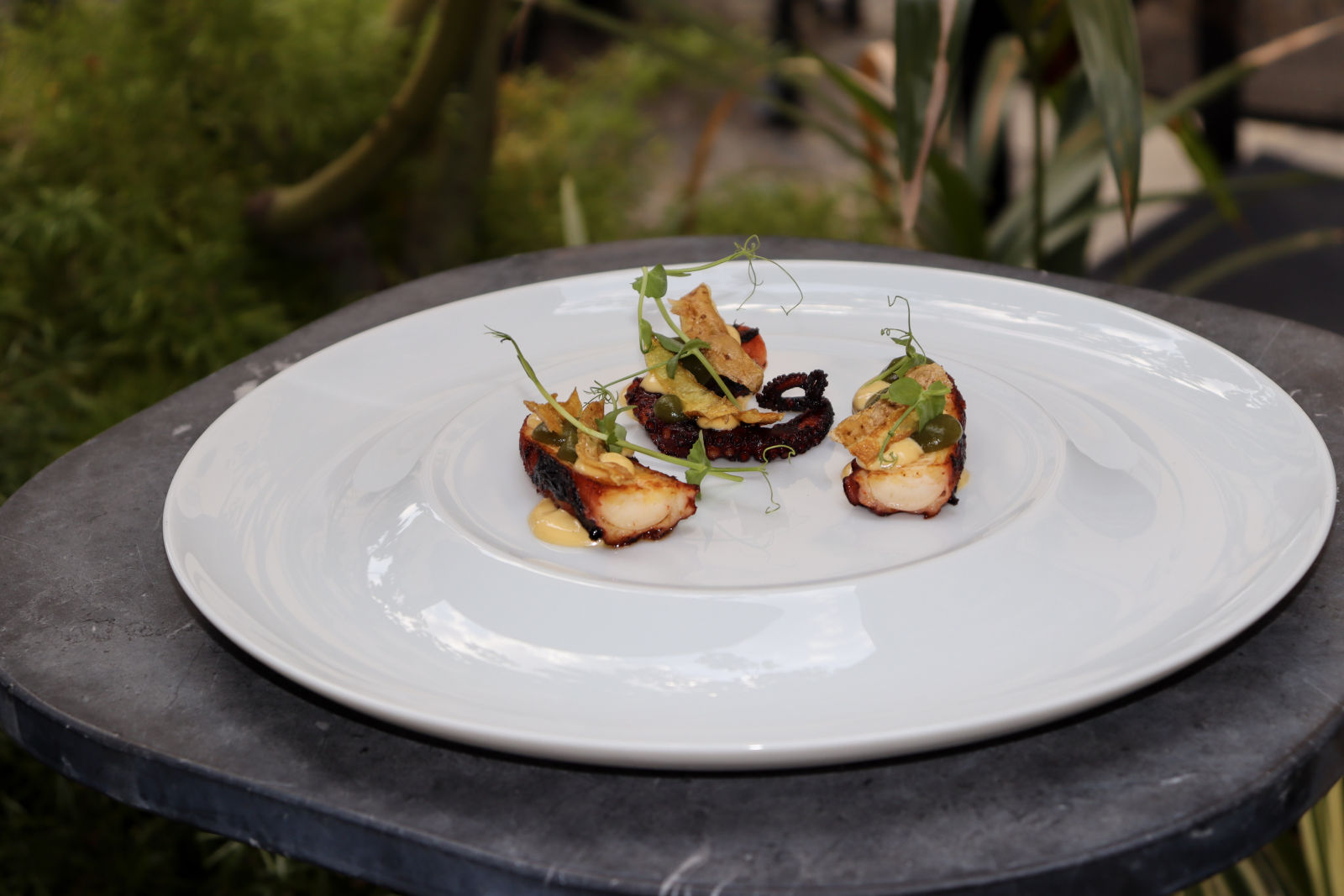
Grilled octopus
(grilled octopus tentacle, mayonnaise with sea urchin, green sauce and crisp potatoes)
Ingredients
2 octopus tentacles, ½ onion, 1 pepper, 1 laurel leaf, 50 ml white wine, 20 grams dill, 20 grams parsley, 20 grams wild fennel, 5 ml apple vinegar, 20 grams sea urchin, 1 egg yolk, 5 ml lemon juice, 100 ml seed oil, 1 potato (skins only), 0.2 grams agar agar, salt.
Instructions
Cut the tentacles from the octopus, place them in a pot with oil, julienned onions, laurel leaf, red pepper and white wine. Turn heat on low. It will take at least two hours to cook the octopus, as it will slowly release its own water and will simmer until cooked. When ready, spread out on a pan and cool immediately. Reduce the cooking liquid slowly and when it has achieved the right consistency, whisk and pass through a sieve. The first sauce is ready. While the octopus is cooling, begin preparing the second sauce, known as the “green sauce”, a sauce made with green aromatic herbs which will give a touch of acidity to the dish. The green sauce is made by separately blanching the parsley, the dill and the wild fennel and cooling them in ice water. Now remove the excess water from the herbs by patting with a towel. Blend with the apple vinegar and bind with a thickener to turn the sauce into a gel. Finally, prepare the sea urchin-flavoured mayonnaise. Separate one egg yolk from the white, add the lemon juice, salt and sea urchin pulp. Mix with an immersion blender and little by little add the seed oil until the mayonnaise reaches the right consistency. As a garnish, let’s prepare the crisp potato skins. Peel the potatoes and rinse the skins under cold running water to remove as much starch as possible. Pat them dry with a towel. Bring the seed oil to a temperature of 160 degrees and fry the potato skins a few at a time, drain on paper towels and salt. Put the potato skins in a dehydrator and let them dehydrate for 24 hours. Now that all the ingredients are ready, we can assemble the dish. Sauté the octopus tentacle in a hot pan with oil. Place it on a plate and decorate with all three sauces. Garnish with the crispy potato skins.
On the cover: Saint, Monza. Design: Julia Hyoun Hee Na / Spatial (Courtesy Saint).
©ALL RIGHTS RESERVED


